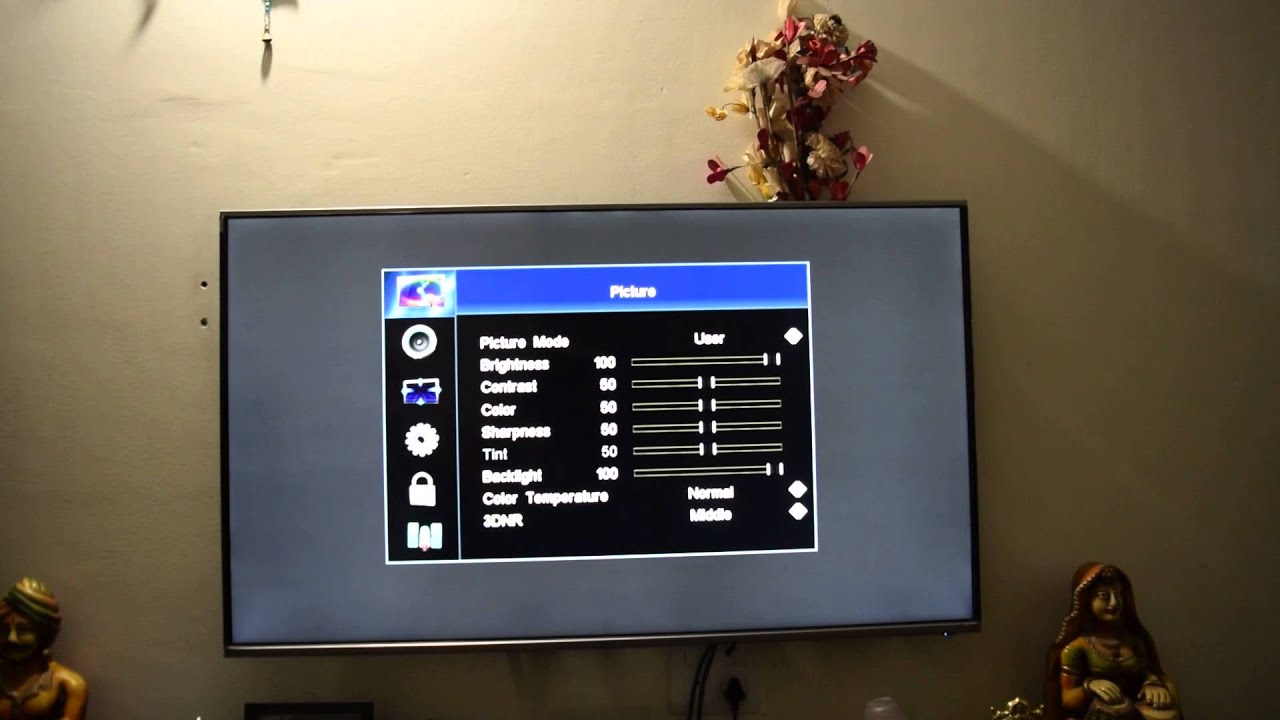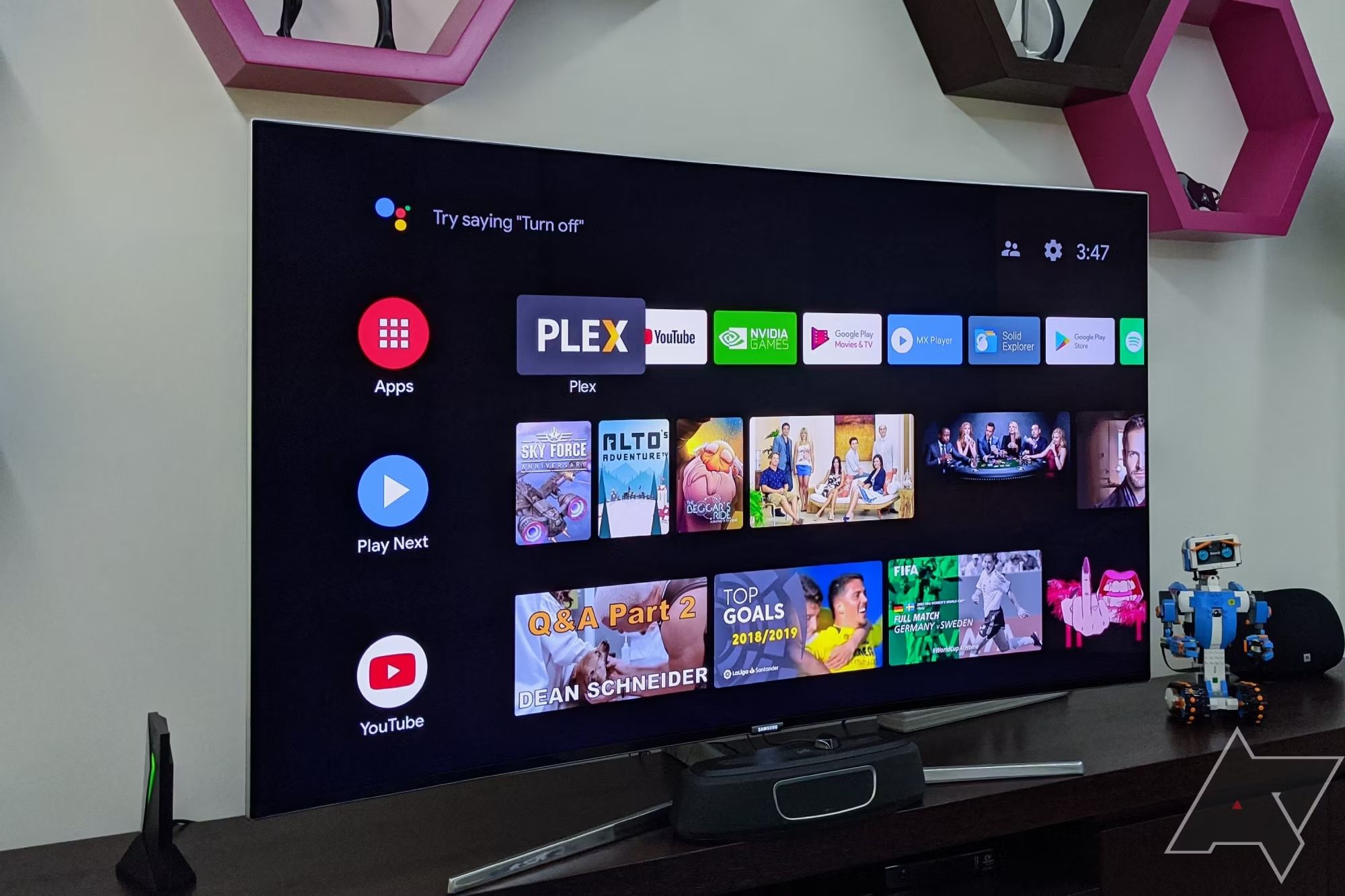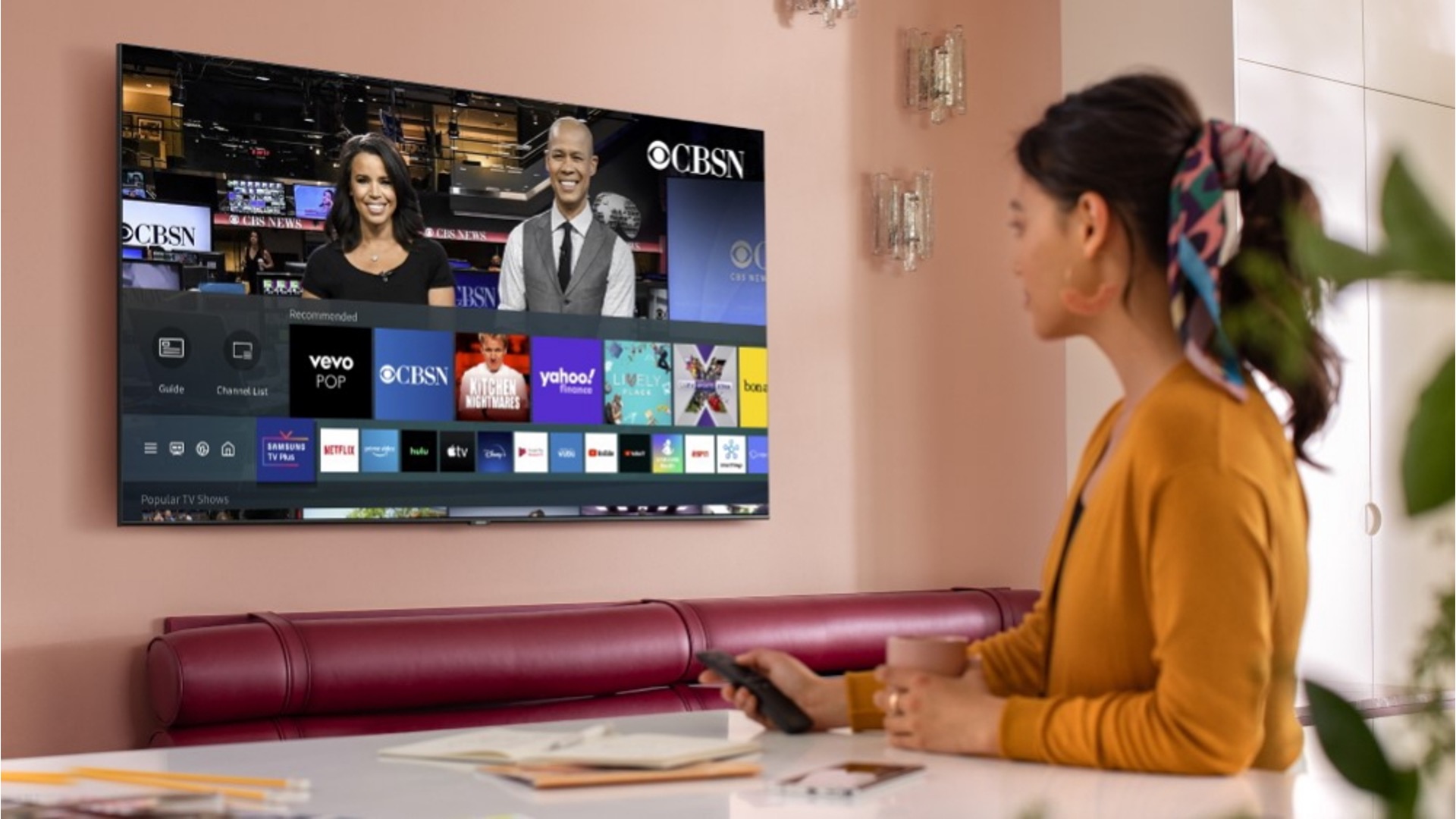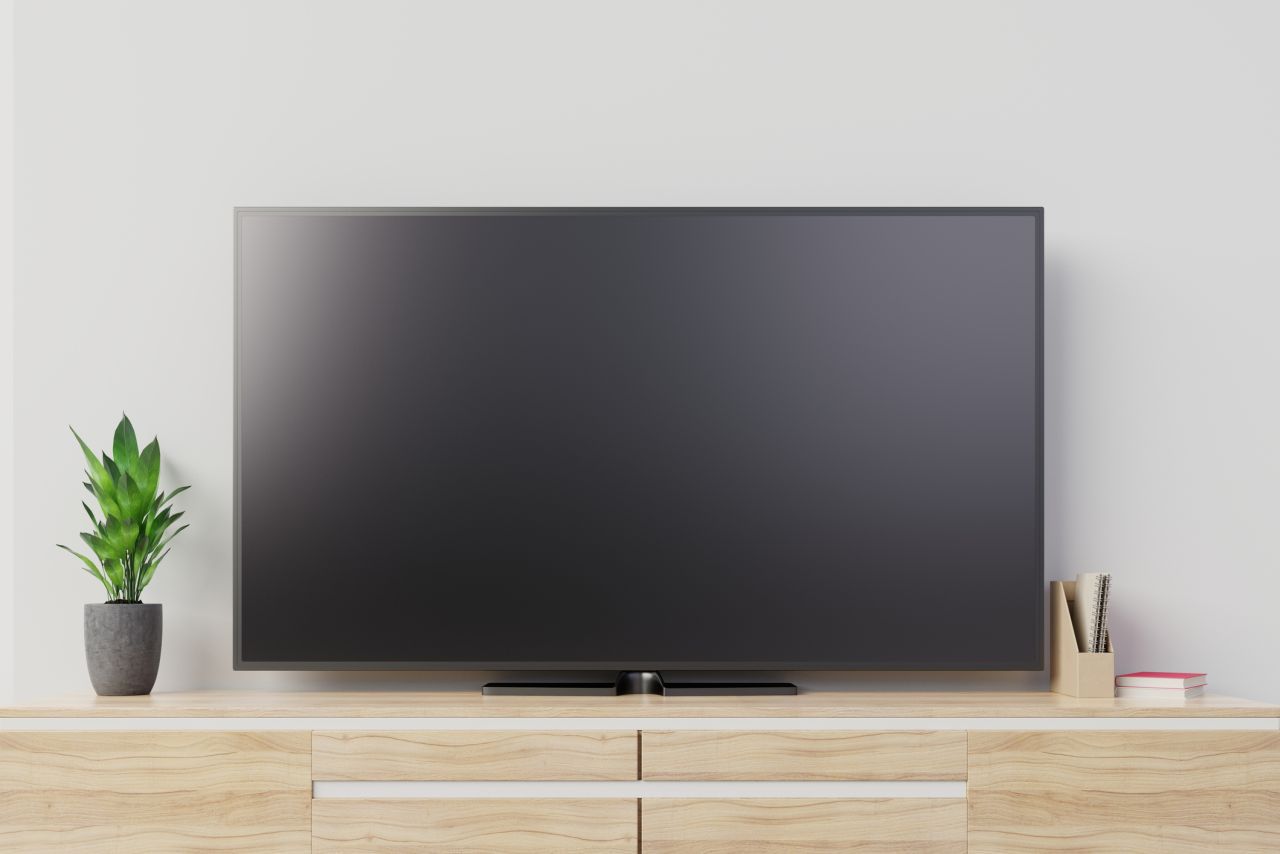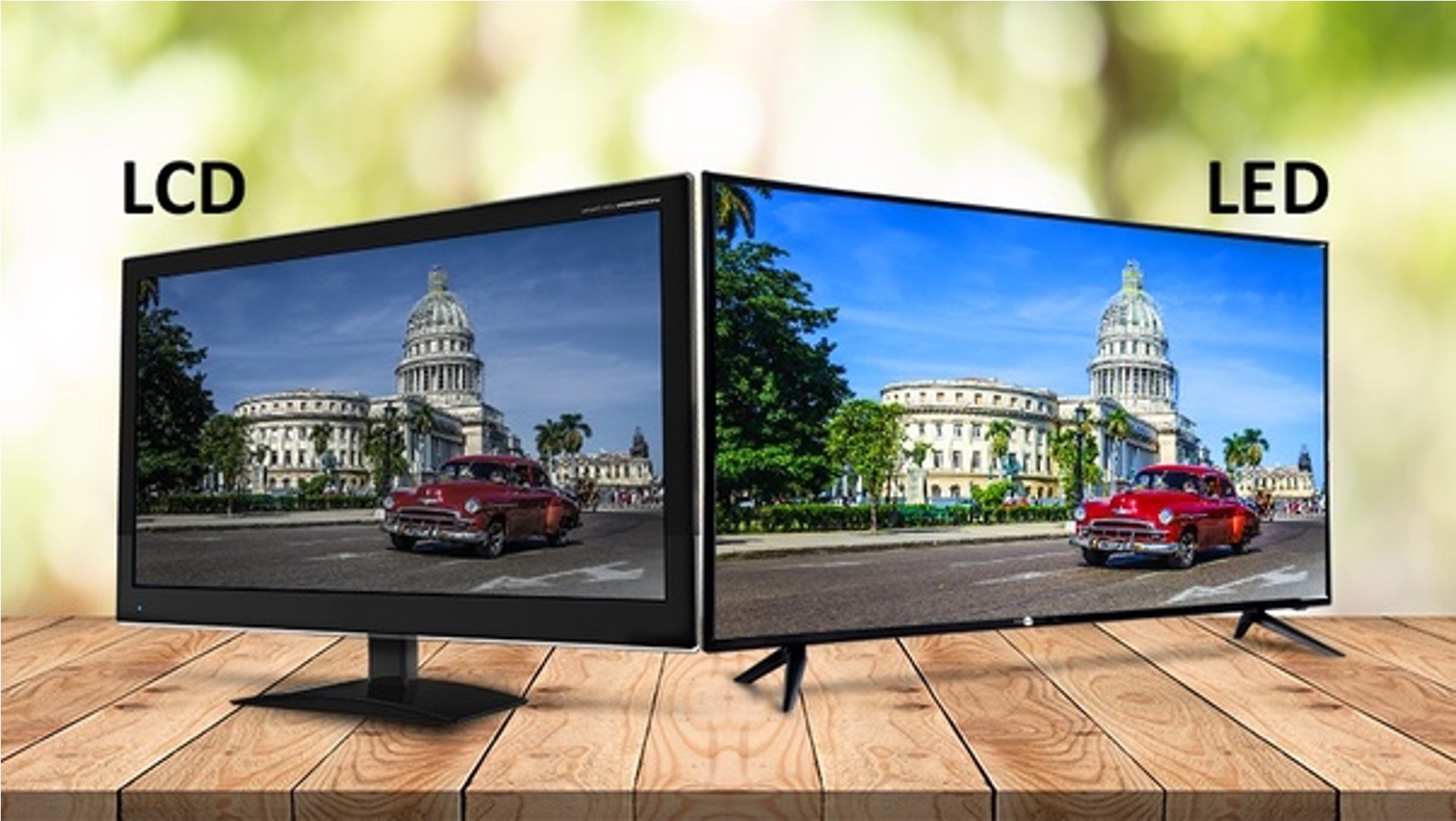Introduction
Welcome to the world of LED TVs, where sleek design, vibrant colors, and crisp images come together to deliver an immersive viewing experience. However, like any other technology, LED TVs are not without their flaws. One common issue that many users encounter is known as LED TV clouding. In this article, we will explore what LED TV clouding is, its causes, how to identify it, and most importantly, how to minimize and fix this problem.
LED TV clouding refers to the uneven distribution of backlight across the screen, resulting in patches or spots of light that can be distracting when watching movies or TV shows. These bright spots can appear on dark scenes or during scenes with a lot of contrast, and they may vary in size and intensity. While LED TV clouding can be an annoyance, it is important to note that it is a common issue that can affect many LED TVs, regardless of their brand or price point.
There are several potential causes for LED TV clouding. One reason is the manufacturing process of LED TVs, where the placement of the backlighting modules and the use of diffusers can contribute to uneven light distribution. Another factor can be the quality of the individual LED bulbs used in the display, as lower-quality bulbs may have inconsistencies in brightness. Additionally, environmental factors such as temperature changes and humidity can also impact the occurrence of LED TV clouding.
Identifying LED TV clouding can be relatively straightforward. When watching a dark or low-light scene, you may notice areas of the screen that appear brighter or have a halo effect around them. If the clouding is severe, it may even be visible during brighter scenes. It is important to differentiate between true LED TV clouding and other display issues like backlight bleeding, which is the leakage of light around the edges of the screen.
The effects of LED TV clouding can vary depending on the severity and location of the bright spots. For some users, it may be a minor annoyance that doesn’t significantly impact the overall viewing experience. However, for others, particularly those who are sensitive to visual distractions, LED TV clouding can be quite bothersome and distracting.
In the next sections, we will delve deeper into how you can minimize LED TV clouding, prevent it from worsening, and explore methods to fix the issue should you experience it. By following these steps, you can enjoy a more consistent and immersive viewing experience on your LED TV without the distraction of clouding.
What is LED TV Clouding?
LED TV clouding is a common issue that occurs in LED TVs, resulting in uneven backlight distribution across the screen. This phenomenon causes patches or spots of bright light to appear, especially in darker scenes or areas of high contrast. LED TV clouding can be problematic as it can distract viewers and diminish the overall viewing experience.
The primary cause of LED TV clouding lies in the manufacturing process of these TVs. During production, the placement of the backlighting modules and the use of diffusers can contribute to an uneven distribution of light. Additionally, the quality of the individual LEDs used in the display can also impact the occurrence of clouding. Lower-quality LEDs may have inconsistencies in brightness, leading to more prominent clouding issues.
Environmental factors can also play a role in LED TV clouding. Fluctuations in temperature and humidity can affect the performance of the LED backlighting system, exacerbating the problem. Therefore, it is essential to consider the surrounding conditions and ensure proper ventilation to minimize the occurrence of clouding.
Identifying LED TV clouding is relatively straightforward. When watching a dark or low-light scene, you may notice areas of the screen that appear brighter than others, creating uneven patches of light. This effect can be particularly noticeable in scenes with a lot of contrast. It is crucial to differentiate between clouding and other display issues such as backlight bleeding, which involves light leakage around the edges of the screen rather than concentrated patches of light.
The effects of LED TV clouding can vary depending on the severity and location of the bright spots. Some viewers might find it to be a minor annoyance that does not significantly impact their overall viewing experience. However, for individuals who are sensitive to visual distractions, LED TV clouding can be quite bothersome and lead to a decreased level of enjoyment while watching their favorite movies or TV shows.
It is important to note that LED TV clouding is not exclusive to any particular brand or model of LED TV. It can occur across various price ranges and specifications. While some TVs may exhibit more noticeable clouding than others, there is usually no way to completely eliminate this issue. Nevertheless, there are methods available to minimize the occurrence of clouding and improve the overall visual consistency of your LED TV.
In the following sections, we will explore how to identify LED TV clouding, the potential effects it can have on your viewing experience, and most importantly, how to minimize and even fix this issue.
Causes of LED TV Clouding
LED TV clouding can be attributed to various factors related to the manufacturing process and environmental conditions. Understanding these causes can help you better identify and address the issue of clouding in your LED TV.
Manufacturing Process:
One major cause of LED TV clouding is the manufacturing process itself. During production, the placement of the backlighting modules and the use of diffusers can result in an uneven distribution of light across the screen. These modules and diffusers are responsible for dispersing the light from the LED bulbs evenly. However, variations in the placement or quality of these components can lead to clouding issues.
The quality of the individual LED bulbs used in the display panel can also play a role in contributing to clouding. Lower-quality LEDs may have inconsistencies in brightness, which can result in more noticeable clouding. Higher-end LED TVs often utilize better-quality LEDs, which can help minimize clouding to some extent.
Environmental Factors:
Environmental conditions can affect the occurrence and severity of LED TV clouding. Fluctuations in temperature and humidity can impact the performance of the LED backlighting system. Extreme temperature changes or high humidity levels can exacerbate the clouding issue. Therefore, it is important to maintain a stable environment and provide proper ventilation for your LED TV to minimize the chances of clouding.
Pressure on the Display Panel:
Another potential cause of LED TV clouding is the application of pressure on the display panel. Excessive pressure on the screen, either during transportation or when cleaning the TV, can create temporary distortions in the backlighting, leading to clouding. This type of clouding is generally temporary, and the display should return to its normal state once the pressure is removed.
Uneven Aging of Components:
Over time, the individual components of an LED TV, including the backlighting system, can age unevenly. This can result in changes in brightness and inconsistencies in light distribution, leading to clouding. While aging is a natural process, proper maintenance and care can help minimize the effects of uneven aging on LED TV clouding.
In summary, LED TV clouding is caused by various factors, including the manufacturing process, environmental conditions, pressure on the display panel, and uneven aging of components. Understanding these causes can help you identify the potential sources of clouding in your LED TV. In the next sections, we will explore how to identify and minimize LED TV clouding, as well as techniques to fix the issue if it occurs.
How to Identify LED TV Clouding
Identifying LED TV clouding is essential in determining whether your TV is affected by this issue. There are several key indicators that can help you identify clouding and distinguish it from other display problems.
Dark and Low-Light Scenes:
One of the most common situations in which LED TV clouding becomes noticeable is during dark or low-light scenes. When the majority of the screen is dark, you may observe patches or spots of brighter light, which indicate clouding. These brighter areas can appear as unevenly distributed patches or a halo effect around certain regions.
Scenes with High Contrast:
LED TV clouding can also be apparent in scenes with high contrast. If there is a significant difference in brightness between different parts of the image, such as a brightly lit object against a dark background, any clouding present on the screen is likely to become more noticeable.
Uniformity Test Patterns:
A more precise way to identify LED TV clouding is by using uniformity test patterns. These patterns consist of a series of evenly distributed colors or gradients across the screen. By displaying these patterns, any inconsistencies or irregularities in the backlighting can become more apparent. Keep in mind that doing this test may require accessing specific settings or technical menus on your TV.
It is important to note that LED TV clouding should not be confused with other display issues, such as backlight bleeding or dead pixels. Backlight bleeding refers to the leakage of light around the edges of the screen, while dead pixels are individual pixels that do not display any color. LED TV clouding, on the other hand, appears as concentrated patches or spots of brighter light on the screen.
When identifying LED TV clouding, it is crucial to assess the severity of the issue. Some TVs may have minimal clouding that is only noticeable in specific conditions, while others may exhibit more pronounced clouding that is visible even in brighter scenes. Evaluating the impact of clouding on your viewing experience can help determine the appropriate steps to minimize or address the issue.
In the next sections, we will explore the effects of LED TV clouding and provide techniques to minimize and even fix this problem, allowing you to enjoy a more consistent and immersive viewing experience on your LED TV.
Effects of LED TV Clouding
The effects of LED TV clouding can vary depending on the severity and location of the bright spots on the screen. While some users may find it to be a minor annoyance, others may experience more significant disruptions to their viewing experience.
Distraction:
One of the primary effects of LED TV clouding is distraction. Bright spots or patches of light on the screen can draw your attention away from the content you are watching. This distraction can be especially noticeable during dark or low-light scenes, where the contrast between the bright spots and the rest of the image is more pronounced.
Reduced Immersion:
LED TV clouding can also compromise the immersion factor while watching movies or TV shows. Clouding can break the sense of realism and impact your ability to fully immerse yourself in the on-screen action. This effect is particularly evident in scenes that require a high level of darkness or when watching content that heavily relies on shadow detail.
Diminished Contrast and Black Levels:
Clouding can undermine the intended contrast and black levels of a scene. The presence of bright spots on the screen can make darker areas appear less deep or rich, affecting the overall visual quality. This can be particularly frustrating for users who value accurate contrast and black levels when enjoying their favorite movies or TV series.
Visual Inconsistency:
Another effect of LED TV clouding is a lack of visual consistency across the screen. Clouding can create uneven patches or spots of light, leading to an imbalanced distribution of brightness. This inconsistency can be especially noticeable when viewing content that features gradual changes in lighting or when performing tasks that require a uniform display, such as photo editing or graphic design.
It is important to note that the severity of LED TV clouding can vary from one TV to another. Some TVs may exhibit minimal clouding that is only noticeable in specific conditions, while others may suffer from more pronounced issues that affect the overall picture quality. Additionally, individual tolerance to visual distractions can also impact how much LED TV clouding affects your enjoyment of the content.
In the following sections, we will explore methods to minimize LED TV clouding, as well as techniques to fix the issue if it occurs. By addressing this problem, you can enhance your viewing experience and enjoy more consistent image quality on your LED TV.
How to Minimize LED TV Clouding
While it may not be possible to completely eliminate LED TV clouding, there are steps you can take to minimize its occurrence and improve the overall visual consistency of your TV.
Optimal Viewing Conditions:
Creating optimal viewing conditions can help minimize the visibility of LED TV clouding. Ensure that the room is adequately lit but without excessive glare on the screen. Additionally, avoid placing the TV in direct sunlight or near bright light sources that may accentuate clouding.
Screen Calibration:
Properly calibrating your TV’s screen settings can help improve overall image quality and reduce the perception of clouding. Consult your TV’s user manual or explore calibration settings within the TV’s menu to adjust picture settings such as brightness, contrast, and backlight levels. Striking the right balance can help minimize the visibility of clouding.
Temperature and Ventilation:
Maintaining an appropriate temperature and providing proper ventilation for your TV can help minimize LED TV clouding. Avoid exposing the TV to extreme temperature changes, as this can impact the performance of the backlighting system. Additionally, ensure that the TV has proper airflow to prevent overheating, which can exacerbate clouding issues.
Avoid Static Images and High Brightness Levels:
Displaying static images for an extended period or keeping brightness levels excessively high can contribute to the occurrence and visibility of LED TV clouding. To minimize the risk, avoid leaving static images, such as channel logos or video game HUDs, displayed on the screen for an extended period. Additionally, consider reducing the brightness level of your TV during regular viewing to minimize clouding effects.
Consider a Local Dimming Feature:
If your LED TV has a local dimming feature, enabling it can help reduce the appearance of clouding. Local dimming allows the TV to adjust the backlighting in specific areas of the screen, providing better contrast and reducing the visibility of clouding effects. However, it is important to note that local dimming can vary in effectiveness across different TV models and may not completely eliminate clouding.
Regular Maintenance:
Performing regular maintenance on your TV can also help minimize LED TV clouding. Ensure that the screen is clean and free from dust or debris that may affect the backlighting performance. Use a soft, lint-free cloth to gently clean the screen, avoiding any pressure that could potentially worsen clouding or damage the TV.
By implementing these measures, you can minimize the occurrence and visibility of LED TV clouding, enhancing your overall viewing experience. However, it is important to remember that these steps may not completely eliminate clouding, as it can be inherent to the display technology and manufacturing process.
In the following sections, we will explore methods to prevent LED TV clouding from worsening and provide techniques to fix the issue if it occurs.
Preventing LED TV Clouding
While LED TV clouding may not be entirely preventable, there are measures you can take to minimize the risk and prevent it from worsening over time.
Proper Handling and Installation:
When setting up your LED TV, ensure that it is handled and installed correctly. Avoid applying excessive pressure on the screen during transportation or installation, as this can cause temporary distortions in the backlighting and lead to clouding. Follow the manufacturer’s instructions for installation to minimize any potential damage.
Maintain Stable Environmental Conditions:
Environmental factors can significantly impact the occurrence of LED TV clouding. Try to maintain a stable temperature and humidity level in the room where your TV is located. Extreme temperature changes or high humidity can exacerbate the clouding issue. Avoid placing the TV in areas where it may be exposed to direct sunlight or near sources of excessive heat or moisture, such as radiators or bathrooms.
Ensure Proper Ventilation:
Proper ventilation is crucial to the longevity and performance of your LED TV. Ensure that there is sufficient airflow around the TV to prevent overheating. Blocked or restricted ventilation can increase the risk of clouding and other issues. Avoid placing objects directly around or against the TV that may obstruct airflow and heat dissipation.
Avoid Extreme Brightness and Contrast Levels:
Running your LED TV at excessively high brightness and contrast levels for prolonged periods can contribute to clouding. Be mindful of the settings you choose for your TV, keeping brightness and contrast levels within recommended ranges. Check your TV’s user manual or consult the manufacturer’s guidelines for optimal settings to avoid pushing the display beyond its capabilities.
Quality of LED TV:
Investing in a reputable and high-quality LED TV can help minimize the risk of clouding. Higher-end models often have better-manufactured components and more advanced backlighting systems, resulting in reduced clouding issues. Research and choose a model known for good backlighting performance and customer reviews that praise the TV’s uniformity and lack of clouding.
Regular Maintenance:
Perform regular maintenance of your LED TV to keep it in optimal condition. Gently clean the screen regularly using a soft, lint-free cloth to remove dust and debris. Avoid using harsh chemicals or abrasive materials that can damage the screen or affect the backlighting system. Regular maintenance can prevent dust and dirt from accumulating, which may impact the performance of the display.
By implementing these preventive measures, you can minimize the risk of LED TV clouding and maintain a more consistent visual experience over time. However, it is important to note that while these measures can help reduce the occurrence of clouding, they may not eliminate it entirely due to the inherent nature of the technology and manufacturing processes.
In the following section, we will explore techniques to fix LED TV clouding in case you encounter this issue.
Fixing LED TV Clouding
If you are experiencing LED TV clouding, there are several techniques you can try to alleviate the issue. Keep in mind that the effectiveness of these methods may vary depending on the severity of the clouding and the specific characteristics of your TV.
Gentle Massage Method:
For mild cases of LED TV clouding, a gentle massage method can sometimes help improve the backlight distribution. By applying light pressure with a microfiber cloth or your fingertips to the affected areas, you may be able to redistribute the backlight and reduce the visibility of clouding. However, it is essential to be cautious and not exert too much force to avoid damaging the screen.
Local Dimming Adjustments:
If your LED TV has local dimming capabilities, adjusting the local dimming settings may help minimize the appearance of clouding. Experiment with different local dimming settings to find the configuration that provides the best balance between reducing clouding and maintaining optimal image quality. Keep in mind that local dimming may not completely eliminate clouding, but it can help mitigate its visibility.
Professional Calibration:
Consider getting your LED TV professionally calibrated. Professional calibrators have the knowledge and equipment to optimize the TV’s settings, including backlighting adjustments, to reduce the visibility of clouding. This service can help achieve a more uniform and consistent image across the screen, improving overall picture quality.
Manufacturer Support:
If the clouding issue persists and is causing significant disruptions to your viewing experience, it is advisable to contact the manufacturer’s customer support. They may be able to provide specific troubleshooting steps or offer a repair or replacement option if the clouding is deemed to be a manufacturing defect. Check your TV’s warranty terms and contact the manufacturer for guidance.
Panel Replacement:
In extreme cases of LED TV clouding that cannot be remedied through other methods, panel replacement may be necessary. This option should be considered as a last resort, as it can be costly, and the success of the replacement may vary. Consult with a professional technician or the manufacturer’s service center to determine if panel replacement is a viable solution for your specific situation.
It is essential to remember that attempting any fixes or adjustments yourself carries some risk. It is crucial to proceed with caution and follow any instructions provided by the manufacturer or a professional. If you are uncertain or uncomfortable performing any troubleshooting or repair techniques, it is best to seek professional assistance.
By exploring these methods and seeking appropriate support, you can address LED TV clouding and improve the overall visual quality of your TV.
Conclusion
LED TV clouding, the uneven distribution of backlight across the screen, can be a common issue that affects the visual quality of LED TVs. While it may not be possible to completely eliminate clouding, there are steps you can take to minimize its occurrence and mitigate its impact on your viewing experience.
Understanding the causes of LED TV clouding, such as manufacturing processes, environmental factors, and aging components, can help you identify and address this issue. By being able to differentiate clouding from other display problems, you can accurately assess the severity of the clouding and determine the appropriate steps to take.
We explored techniques to minimize LED TV clouding, such as creating optimal viewing conditions, calibrating the screen settings, maintaining stable environmental conditions, avoiding extreme brightness levels, and considering local dimming features. These measures can help enhance the overall visual consistency of your LED TV and reduce the distraction caused by clouding.
Prevention is key in managing LED TV clouding. Taking preventive steps, such as proper handling and installation, maintaining stable environmental conditions, ensuring proper ventilation, avoiding extreme brightness levels, and investing in a high-quality LED TV, can help minimize the risk of clouding occurring or worsening over time.
If you do encounter LED TV clouding, we discussed various techniques to fix the issue. These include gentle massage methods, adjusting local dimming settings, professional calibration, seeking assistance from the manufacturer’s support, and, in extreme cases, panel replacement. It is important to exercise caution and, in some cases, consult with professionals to avoid causing further damage to your TV.
By implementing the techniques and suggestions provided in this article, you can improve the overall viewing experience on your LED TV by minimizing clouding and enhancing the visual quality. Remember that LED TV clouding can differ among different TV models, so the effectiveness of solutions may vary. Additionally, if clouding persists or worsens, it is advisable to seek guidance from the manufacturer or a professional technician.
Enjoy your LED TV knowing that you are equipped with the knowledge and steps to address LED TV clouding and enhance your viewing pleasure.







